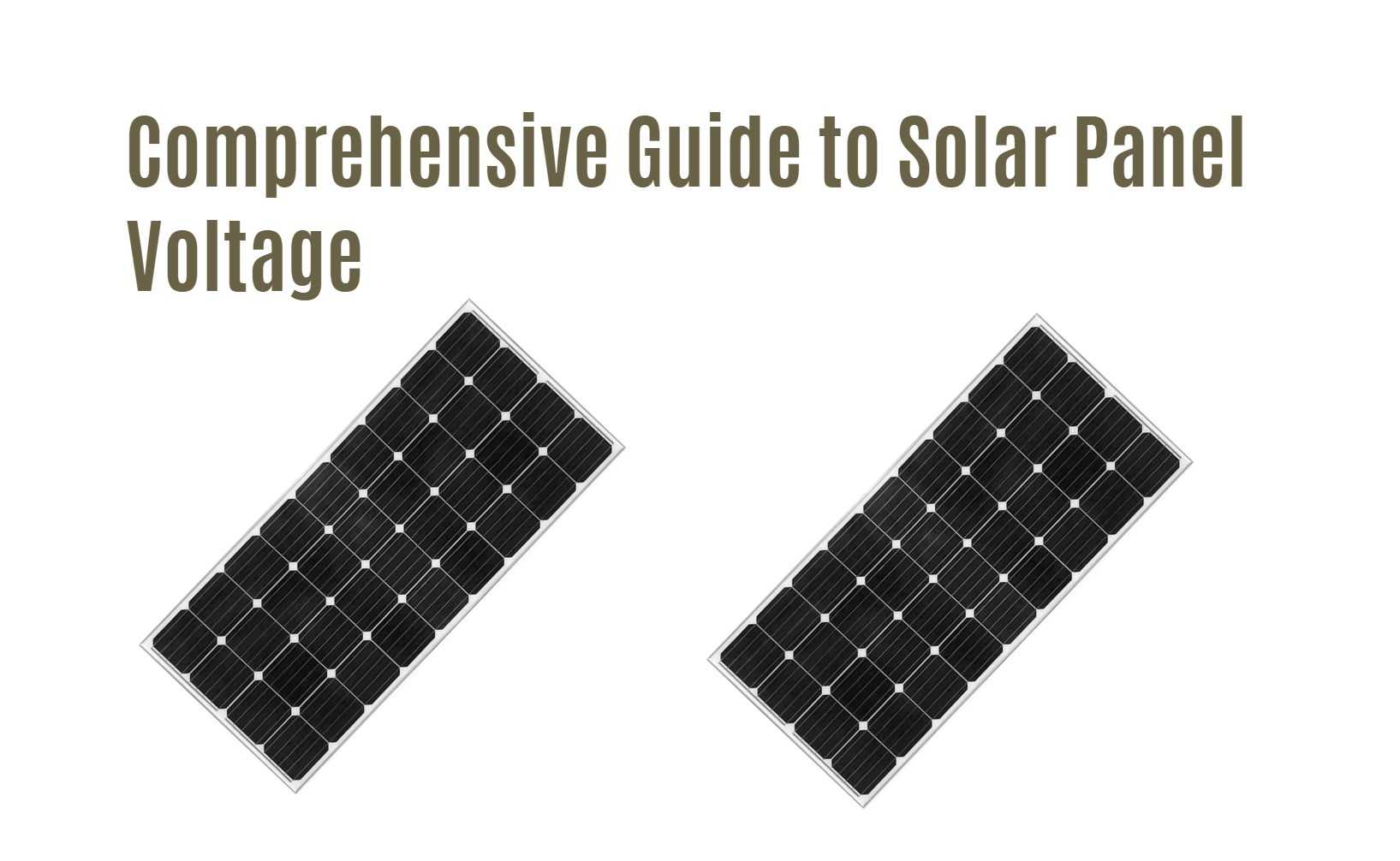Solar panels are integral to harnessing solar energy, transforming sunlight into electricity through photovoltaic cells. Understanding the voltage output of solar panels is crucial for optimizing their efficiency and ensuring they meet energy needs. This guide delves into the intricacies of solar panel voltage, from basic concepts to detailed specifications of various wattage panels, providing a comprehensive resource for both enthusiasts and professionals.
The Basics of Solar Panel Voltage Output
Solar panels are composed of multiple photovoltaic (PV) cells, typically made from silicon. Each cell acts as a semiconductor, converting light energy into electrical energy. The voltage output of a single solar cell under Standard Test Conditions (STC) is approximately 0.5 volts. To increase the overall voltage, these cells are connected in series within a solar panel.
Common Solar Panel Configurations
- 36-Cell Panels:
- Voltage: 18 Volts
- Applications: Small residential systems, off-grid setups
- 60-Cell Panels:
- Voltage: 30 Volts
- Applications: Standard residential and commercial installations
- 72-Cell Panels:
- Voltage: 36 Volts
- Applications: Large-scale commercial and utility projects
AC vs. DC Power in Solar Systems
Solar panels generate Direct Current (DC) power, whereas most household appliances operate on Alternating Current (AC) power. To bridge this gap, an inverter is employed to convert the DC output from solar panels into AC power. This conversion ensures compatibility with home electrical systems, maintaining a standard voltage level of 110 volts and a frequency of 60 Hz.
Wholesale lithium golf cart batteries with 10-year life? Check here.
Hourly and Daily Voltage Output
Voltage Per Hour
The voltage output of a solar panel per hour is influenced by factors such as sunlight intensity, angle of incidence, and temperature. On average, a solar panel can produce between 170 and 350 watts per hour, corresponding to a voltage range of approximately 228.67 volts to 466 volts.
Voltage Per Day
A single solar panel in the United States typically generates around 2 kilowatt-hours (kWh) of electricity per day. This daily output varies based on geographic location, weather conditions, and the efficiency of the solar panel.
Want OEM lithium forklift batteries at wholesale prices? Check here.

Detailed Specifications of Various Wattage Solar Panels
300-Watt Solar Panels
- Voltage Output: 240 Volts
- Current: 1.25 Amps
- Applications: Residential rooftops, small commercial projects
200-Watt Solar Panels
- Voltage Output: 18V or 28V
- Current: 11 Amps (18V), 7 Amps (28V)
- Applications: Portable solar setups, small off-grid systems
500-Watt Solar Panels
- Voltage Output: 12 Volts
- Current: 20-25 Amps
- Applications: Commercial and industrial setups
750-Watt Solar Panels
- Voltage Output: 220 Volts at 3.18 Amps
- Applications: Large-scale commercial installations, high-demand projects
Charging Batteries with Solar Panels
Charging a battery with solar panels requires careful consideration of the battery’s capacity and the panel’s voltage output. For instance, to charge a 100Ah battery:
- Lead-Acid Batteries: At least two 100-watt panels are needed.
- Lithium-Ion Batteries: Three 100-watt panels are typically required.
Common Questions and Answers
- How many volts does a solar panel produce?
- A solar panel typically produces 0.5 Volts per cell, with the total voltage depending on the number of cells.
- What is the difference between AC and DC power?
- Solar panels generate DC power, which is converted to AC power using an inverter for compatibility with home systems.
- How much voltage does a solar panel produce per hour?
- The voltage output ranges from 228.67 volts to 466 volts per hour, depending on sunlight and climate conditions.
- How much voltage does a solar panel produce per day?
- On average, a solar panel generates about 2 kWh of electricity per day.
- How much voltage does a 300-watt solar panel produce?
- A 300-watt solar panel typically produces 240 volts, or 1.25 amps.
- How much voltage does a 200-watt solar panel produce?
- It can produce 18V or 28V, with corresponding currents of 11 amps or 7 amps.
- How much voltage does a 500-watt solar panel produce?
- It can produce around 20-25 amps at 12 volts.
- How much voltage does a 750-watt solar panel produce?
- A 750-watt panel typically produces 220 volts at 3.18 volts.
- How many solar panels are needed to charge a 100Ah battery?
- At least two 100-watt panels for lead-acid batteries, and three for lithium-ion batteries.
- What factors affect the voltage output of a solar panel?
- The size and configuration of the cells, sunlight availability, and panel efficiency.
Conclusion
Understanding the voltage output of solar panels is essential for designing and optimizing solar power systems. By considering factors such as the number of cells, the type of inverter, and specific wattage requirements, one can effectively harness solar energy to meet various power needs. This comprehensive guide provides detailed insights and practical information to assist in maximizing the performance and efficiency of solar installations.







